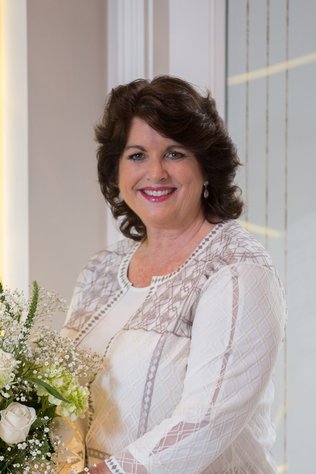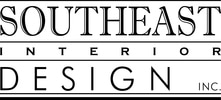
"I believe that most people hire an Interior Designer to create a drop dead environment without getting killed in the process. Designers can complete a project on budget."
Our charges are reasonable. Years of experience have proven that you get what you pay for. However, there are various ways to get where you are going, and your budget will qualify the options available.
If you are unsure how to proceed with your project, we recommend that you schedule an interview and portfolio review with us at Southeast Interior Design, during which time we will answer whatever questions you may have. If you decide to proceed with Southeast Interior Design as your design firm, it is important to have a Letter of Agreement that spells out the exact method of payment and services to be rendered.
Our charges are reasonable. Years of experience have proven that you get what you pay for. However, there are various ways to get where you are going, and your budget will qualify the options available.
- Hourly and Per-Diem (designer for the day) - The designer is paid for all of his or her time. This may include, but not limited to, consultation, conceptual design, space planning, and preparations of working drawings, cabinet designs, budget, shopping and travel.
- Fee for conceptual designs, color and material presentation, which is then combined with a retained percentage on purchased merchandise.
- Flat fee: This requires a thorough and detailed understanding of the services to be rendered and specific areas involved; the written contract states that no additional services are to be added.
- Fee based on square footage: This is issued for space planning.
- Competitive Retail: Purchase at a lesser or comparable price to retail, brick and mortar stores.
If you are unsure how to proceed with your project, we recommend that you schedule an interview and portfolio review with us at Southeast Interior Design, during which time we will answer whatever questions you may have. If you decide to proceed with Southeast Interior Design as your design firm, it is important to have a Letter of Agreement that spells out the exact method of payment and services to be rendered.
Frequently Asked Questions
1) What is the difference between a decorator and an interior designer?
An interior decorator can be someone with a flair for putting things together to make an interior lovely and inviting. An interior designer must be State licensed, schooled in interior design, and required to take CEU’s (continued education units), to keep informed. An interior designer knows a little about a lot, as well as specialized. An interior designer is knowledgeable in building construction, furniture design, fabric construction, space planning, lighting, color, scale, and proportion . Foremost, a designer plays interpreter for the client and psychologist, realizing the client goals. Understanding the psychology of design, how it works and knowing who to consult with to make it all possible. An interior designer acknowledges their own limitations and works with a team of professionals in their area of specialization.
"The team approach to business is what makes an interior designer successful."
2) As a client what do I need to do before I meet with an interior designer?
Have as much information researched as possible. Keep an idea file for every room you are working on. Such as an overall interior look you appreciate, a piece of furniture, a window treatment. A picture is worth a thousand words. The more you have researched, the more confident you will be about what you like and dislike, what you want and don’t want. Have an idea of what you should say your budget is and the designer will tell you if this is a reasonable budget for the project. Be flexible and open-minded about options and ideas.
3) What can an Interior Designer do for you?
"The expertise of a professional interior designer extends far beyond aesthetics. In addition to space planning, lighting design, color coordination, and selection of materials, furnishings, fixtures and finishes, interior designers have a knowledge of interior construction, fire and building codes, as well as, safety, energy, and environmental issues."
(Charles Daly, ASID)
4) How do I hire an Interior Designer?
"Take the time to interview several interior designers before making a final decision.
When you meet with the designers, they will explain the design process, how they work and how they charge for their services. They will also interview you about your needs. It is important that both parties feel comfortable with the working relationship. As with any professional service, a clearly written contract is essential. The agreement should outline what both parties expect to receive from the arrangement, the work that is to be accomplished and the fees required for the job." (Charles DALY, ASID)
Remember, have fun during the design process, it’s one of lasting value and investment in time and money. Communicate honestly and openly all your need and concerns.
Key Words/ Phrases to design:
_ Purveyors of style
_ Clear communication
_ Listen
_ Client confidence and trust
_ Simplicity
_ Project appropriate
_ Attention to detail
_ Collaborative approach
_ A positive experience
_ It is all about You.
_ Satisfaction guarantee
_ Time and monetary budget
_ Don’t be pedestrian
_ Props/ Accessories
1) What is the difference between a decorator and an interior designer?
An interior decorator can be someone with a flair for putting things together to make an interior lovely and inviting. An interior designer must be State licensed, schooled in interior design, and required to take CEU’s (continued education units), to keep informed. An interior designer knows a little about a lot, as well as specialized. An interior designer is knowledgeable in building construction, furniture design, fabric construction, space planning, lighting, color, scale, and proportion . Foremost, a designer plays interpreter for the client and psychologist, realizing the client goals. Understanding the psychology of design, how it works and knowing who to consult with to make it all possible. An interior designer acknowledges their own limitations and works with a team of professionals in their area of specialization.
"The team approach to business is what makes an interior designer successful."
2) As a client what do I need to do before I meet with an interior designer?
Have as much information researched as possible. Keep an idea file for every room you are working on. Such as an overall interior look you appreciate, a piece of furniture, a window treatment. A picture is worth a thousand words. The more you have researched, the more confident you will be about what you like and dislike, what you want and don’t want. Have an idea of what you should say your budget is and the designer will tell you if this is a reasonable budget for the project. Be flexible and open-minded about options and ideas.
3) What can an Interior Designer do for you?
"The expertise of a professional interior designer extends far beyond aesthetics. In addition to space planning, lighting design, color coordination, and selection of materials, furnishings, fixtures and finishes, interior designers have a knowledge of interior construction, fire and building codes, as well as, safety, energy, and environmental issues."
(Charles Daly, ASID)
4) How do I hire an Interior Designer?
"Take the time to interview several interior designers before making a final decision.
When you meet with the designers, they will explain the design process, how they work and how they charge for their services. They will also interview you about your needs. It is important that both parties feel comfortable with the working relationship. As with any professional service, a clearly written contract is essential. The agreement should outline what both parties expect to receive from the arrangement, the work that is to be accomplished and the fees required for the job." (Charles DALY, ASID)
Remember, have fun during the design process, it’s one of lasting value and investment in time and money. Communicate honestly and openly all your need and concerns.
Key Words/ Phrases to design:
_ Purveyors of style
_ Clear communication
_ Listen
_ Client confidence and trust
_ Simplicity
_ Project appropriate
_ Attention to detail
_ Collaborative approach
_ A positive experience
_ It is all about You.
_ Satisfaction guarantee
_ Time and monetary budget
_ Don’t be pedestrian
_ Props/ Accessories




